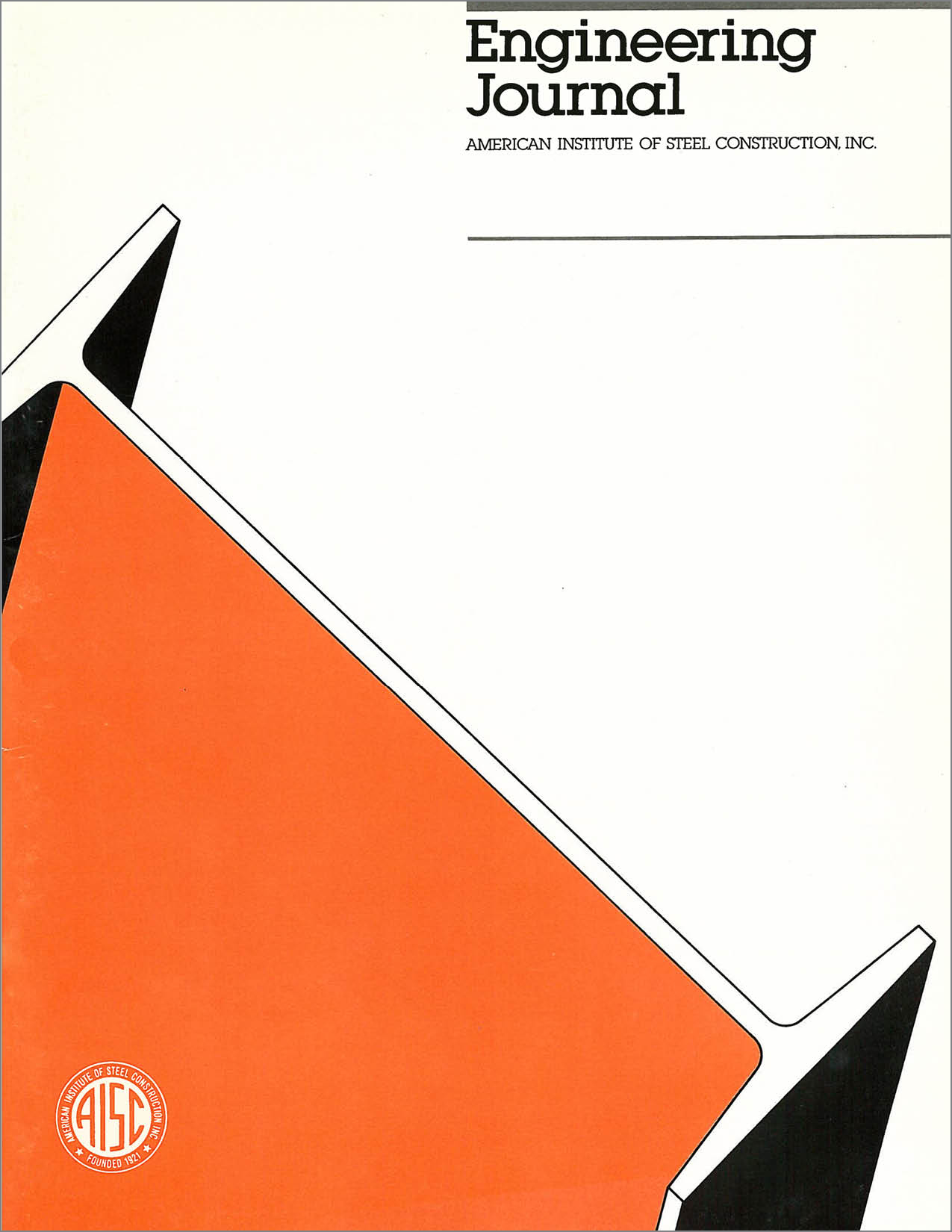Autostress Design Using Compact Welded Beams
DOI:
https://doi.org/10.62913/engj.v26i4.530Abstract
After several years of AISI-sponsored research, autostressdesign procedures for continuous steel bridges have been incorporated in a 1986 AASHTO Guide Specification for Alternate Load-Factor Design Procedures for Steel Beam Bridges Using Braced Compact Sections. Autostress is a procedure that extends existing Load Factor Design (LFD) rules by introducing improved limit-state criteria. LFD is a limit-states design method presently contained in the 13th Edition of the AASHTO Standard Specifications for Highway Bridges. The improved limit-state criteria permit inelastic load redistribution in continuous-beam bridges under heavy loads while satisfying the same structural performance requirements as LFD. The autostress procedures in the guide specification are presently limited to rolled-beam bridges (composite and noncomposite), and compact welded-beam bridges that are adequately braced (braced compact sections). AISI is presently sponsoring additional research to extend the autostress procedures to more slender welded plate-girder sections. Autostress-design procedures recognize the ability of continuous steel members to adjust automatically for the effects of local yielding, such as those caused by overloads. Also, the autostress procedures allow a designer to determine the strength of braced continuous compact beams at maximum loads by computing the mechanism resistance using plastic-design theory with some modifications. In both instances, elastic negative bending moments are automatically redistributed by the structure to positivebending regions. The term autostress has been used for the suggested procedures to emphasize that the load redistribution occurs automatically.

